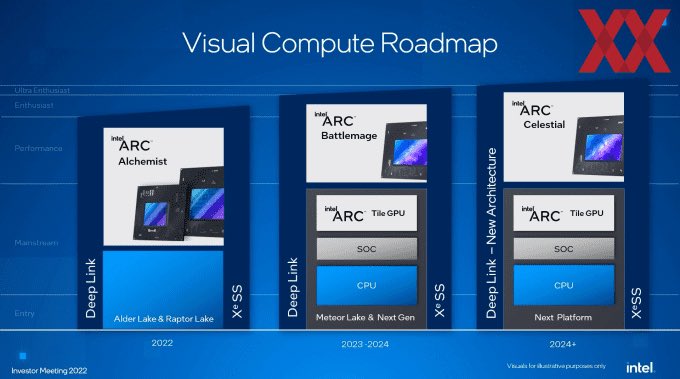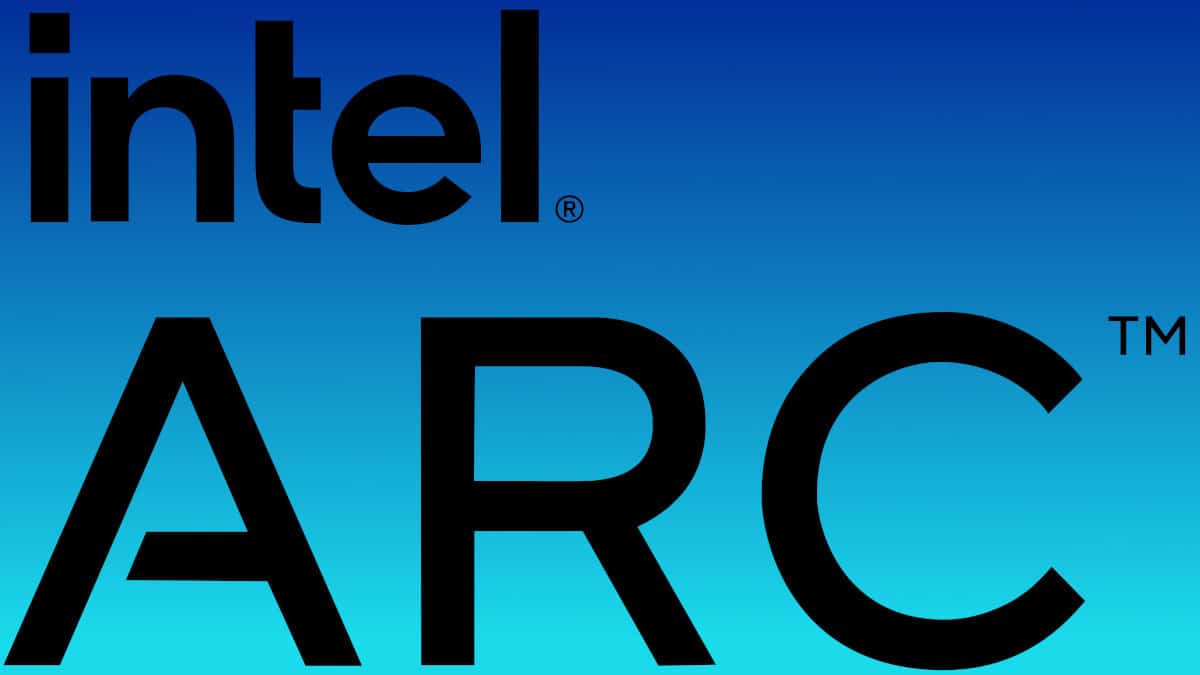Last Updated on
The Intel Arc Battlemage, the company’s second GPU generation, has been at the center of some drama and delays. The speculation around the Intel Arc Battlemage release date has been fueled by various sources, leading to an atmosphere of uncertainty and intrigue. All the while Nvidia and AMD continue to plow forward as the GPU market’s two key options.
The first source of speculation came from a video on the popular tech YouTube channel, Moore’s Law is Dead, suggesting that the Battlemage might be canceled or delayed. This rumor sparked a flurry of discussion within the tech community, leading many to question the plans for Intel Arc Battlemage GPUs.
However, the narrative took a turn when Raja Koduri, Executive VP and General Manager of AXG Group, hinted in an interview with Gadgets360 that the GPU’s development might be progressing more quickly than initially thought. This statement stirred up further speculation, with many observers wondering if an earlier release date was on the cards. We bring you the very latest below.
Intel Arc Battlemage release date rumors
The most recent rumors regarding the release of Intel Arc Battlemage tell us that these new GPUs will be launching before Black Friday, in Fall/Autumn 2024. This comes from Andreas Schilling, representing ComputerBase, suggesting that partners of Intel have been talking about this release window.

If all of this sticks to the plan, 2024 will be a great year for Intel, with the planned release of its new CPU SKUs hitting store shelves around the same time. Although Intel is no competition for Nvidia’s high-end GPUs, it will close the gap incredibly if the new Battlemage comes with these leaked specs. So, for now, we will have to wait until late 2024 to see more.
Going a little further back, a supposed roadmap of Intel’s GPU release plans has emerged from RedGamingTech. If the roadmap is accurate, it could provide some insight into Intel’s schedule. However, without an official statement from Intel, it remains yet another piece in the puzzle of the Arc Battlemage release date speculation.
With all the rumors and speculation, one thing remains clear: the tech community’s excitement for the Intel Arc Battlemage is palpable. This new generation represents a significant step forward in Intel’s graphics technology, promising to redefine gaming and computing experiences.
Has Intel Arc been released?
Intel has indeed released its first GPU generation, known as Intel Arc Alchemist. However, follow-up subsequent GPUs from Intel (the Battlemage generation) have not yet been released. As of now, there is no official release date from Intel for the Battlemage, but speculation suggests that it may become available around the third or fourth quarter of 2024. Looking back, here’s how the first Alchemist generation timeline looked:
- Intel Arc A380 – June 14, 2022
- Intel Arc A310 – September 28, 2022
- Intel Arc A580 – October 10, 2023
- Intel Arc A750 – October 14, 2023
- Intel Arc A770 – October 14, 2023
Intel Arc Battlemage specs rumors
The rumored specifications of Intel’s Battlemage GPUs suggest significant improvements and advancements over its predecessor, the Alchemist GPUs. With up to 64 Xe2 cores, the Battlemage GPUs are expected to double the core count compared to the Alchemist GPUs, which had a maximum of 32 Xe cores. This increase in core count could result in substantial performance gains in gaming and other graphics-intensive tasks.
The clock speed of Battlemage GPUs is anticipated to exceed 3GHz, which is a significant jump compared to the 2.4 – 2.5 GHz range of the Arc A770 Alchemist graphics card. This increase in clock speed should contribute to better overall performance, as well. They are expected to be built on TSMC’s 4nm process node, which should provide improved efficiency and performance compared to the 6nm process used for the Alchemist GPUs.
| Specs | Intel Arc Battlemage |
|---|---|
| Core Count | Up to 64 Xe2 Cores |
| Process node | Above 3 GHz |
| Die Size | TSMC 4nm |
| Clock Speed | 379mm² (similar to AD103) |
| TDP Design (BMG-G10) | 225W+ |
| TDP Design (BMG-G11) | 150W+ |
| Bus Interface | 256-bit |
| L2 Cache | 48 MB |
| Memory Configurations | 8 GB, 16 GB, 32 GB (256-bit) |
| Cut-down Bus Options | 6 GB, 12 GB, 24 GB |
The die size of Battlemage GPUs is estimated to be similar to NVIDIA’s AD103, measuring 379mm², which is slightly smaller than the 406mm² of the Alchemist ACM-G10 GPU. Battlemage is expected to come in two TDP designs, with the BMG-G10 targeting a 225W+ TDP and the BMG-G11 targeting a 150W+ TDP design.
Internally, Battlemage is rumored to feature a 256-bit bus interface and 48 MB of L2 cache. The larger L2 cache (three times the size of the ACM-G10 GPU) is comparable to the NVIDIA AD104 GPU that powers the NVIDIA 4070 Ti. The 256-bit bus interface allows for a variety of memory configurations, including 8GB, 16GB, and 32 GB. Cut-down bus interface options could also be available, offering 6GB, 12GB, and 24GB configurations.
Please keep in mind that these specifications are based on rumors and may change when the final product is officially announced by Intel.
With impressive specifications, the Battlemage flagship is expected to be comparable to NVIDIA’s RTX 4070 Ti, based on the AD104 GPU. The Battlemage’s 48 MB of L2 cache is the same as that of the NVIDIA AD104 GPU, which powers the RTX 4070 Ti. This suggests that both GPUs may offer similar levels of performance in terms of cache capacity.
However, it is important to note that the overall performance of a GPU depends on various factors, such as core count, clock speeds, memory configurations, and architectural differences. While the Intel Battlemage GPUs are anticipated to have a competitive edge in terms of core count and clock speeds, its actual performance in real-world scenarios will be better determined once benchmark results and reviews become available.
Additionally, it is worth mentioning that AMD’s RDNA 3-based GPUs could be another potential competitor for Intel Battlemage. AMD is continuously improving its graphics technology, and the upcoming RDNA 3-based GPUs are expected to bring significant performance improvements over the current RDNA 2 generation.
Intel Arc Battlemage price estimate
Intel aims to offer better price-per-performance graphics cards compared to the competition with their upcoming Arc Battlemage GPUs. While it’s still early to determine the exact pricing, the estimates provided suggest that Intel could potentially offer a competitive edge in the market by targeting lower price points.
The expected price ranges for the different segments of the Arc Battlemage GPUs are as follows:
- Low-end GPUs: $90 to $150
- Mid-end GPUs: $200 to $400
- Halo product: $500 to $700
However, it’s important to note that rumors suggest there might not be a next-gen flagship GPU from Intel, which could indicate that the most expensive Battlemage SKU might be priced at less than $400.
As more information about the Intel Arc Battlemage GPUs becomes available, either through official sources or leaks, we will be able to gain a clearer understanding of the pricing strategy and how it compares to AMD and NVIDIA offerings. For now, it seems that Intel’s intention is to break into the GPU market by providing cons.
Has Intel announced Battlemage yet?
No, Intel hasn’t yet officially announced their new Intel Arc Battlemage generation of GPUs. However, we’ve been eagerly awaiting the follow-up to the Alchemist GPUs, especially as we see Intel’s relatively recent foray into discrete graphics cards gaining traction. With Computex on the way in June 2024 and Battlemage currently slated before Black Friday, the annual event could set the stage for some announcements.
Will Intel Arc Battlemage be better than AMD or Nvidia?
Driver support is regularly getting better, closing the gap between the established Radeon and GeForce graphics cards from AMD and Nvidia respectively. However, it seems as if Intel yet again be targeting a more budget-friendly price bracket. We don’t expect to see any Battlemage flagship cards taking on their rivals’ flagships, but there should be plenty to talk about in the entry-level to mid range.



